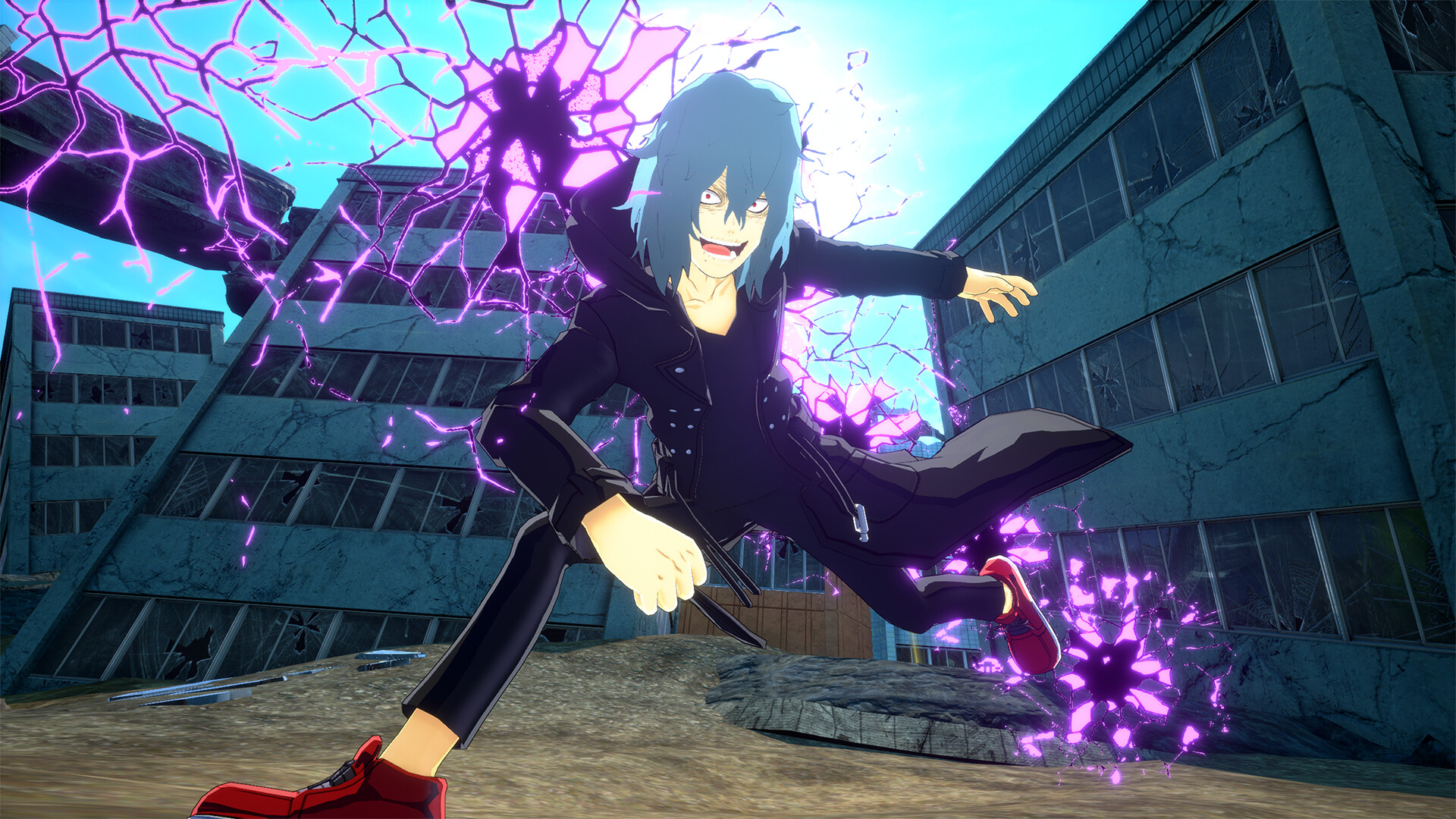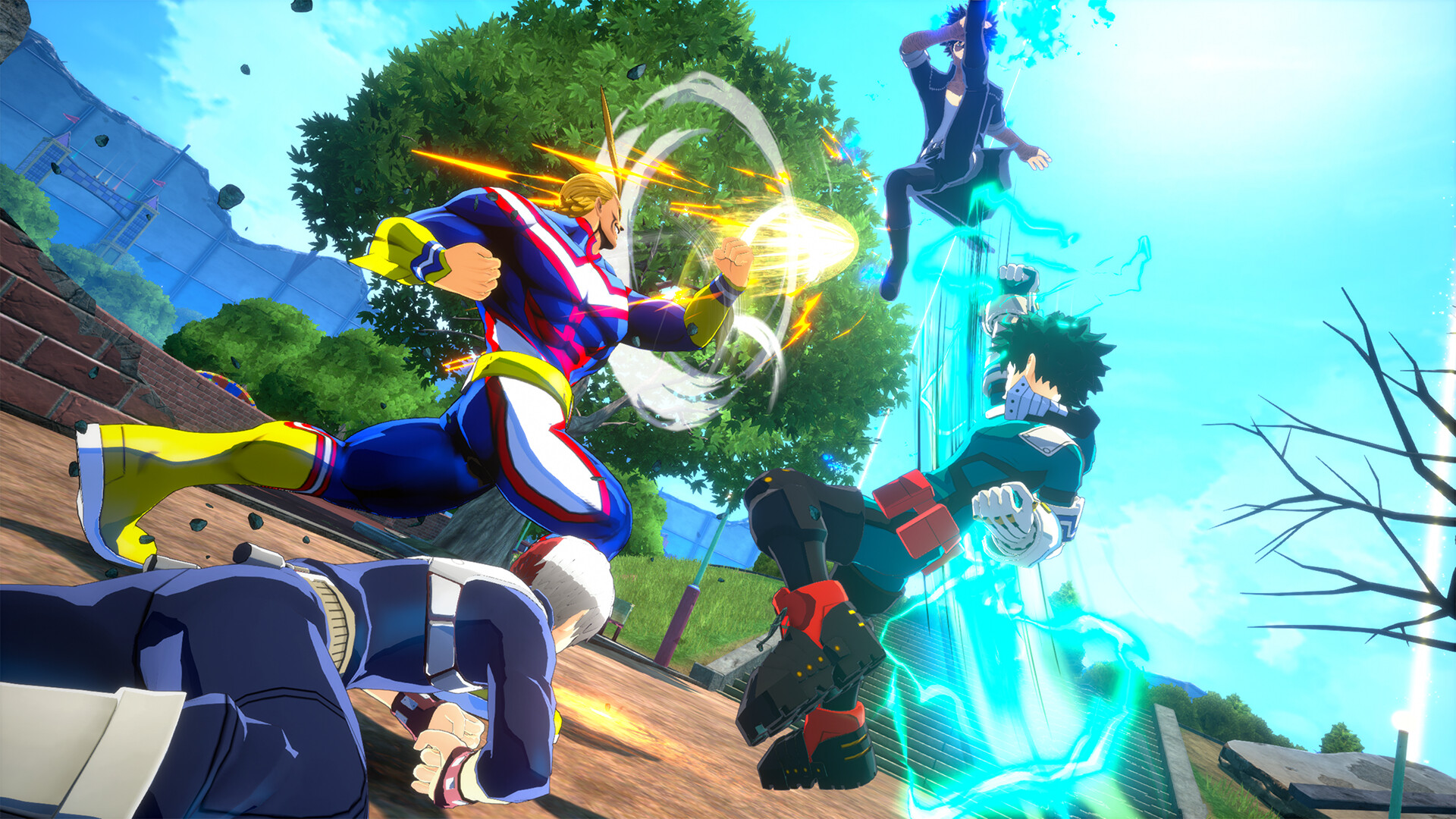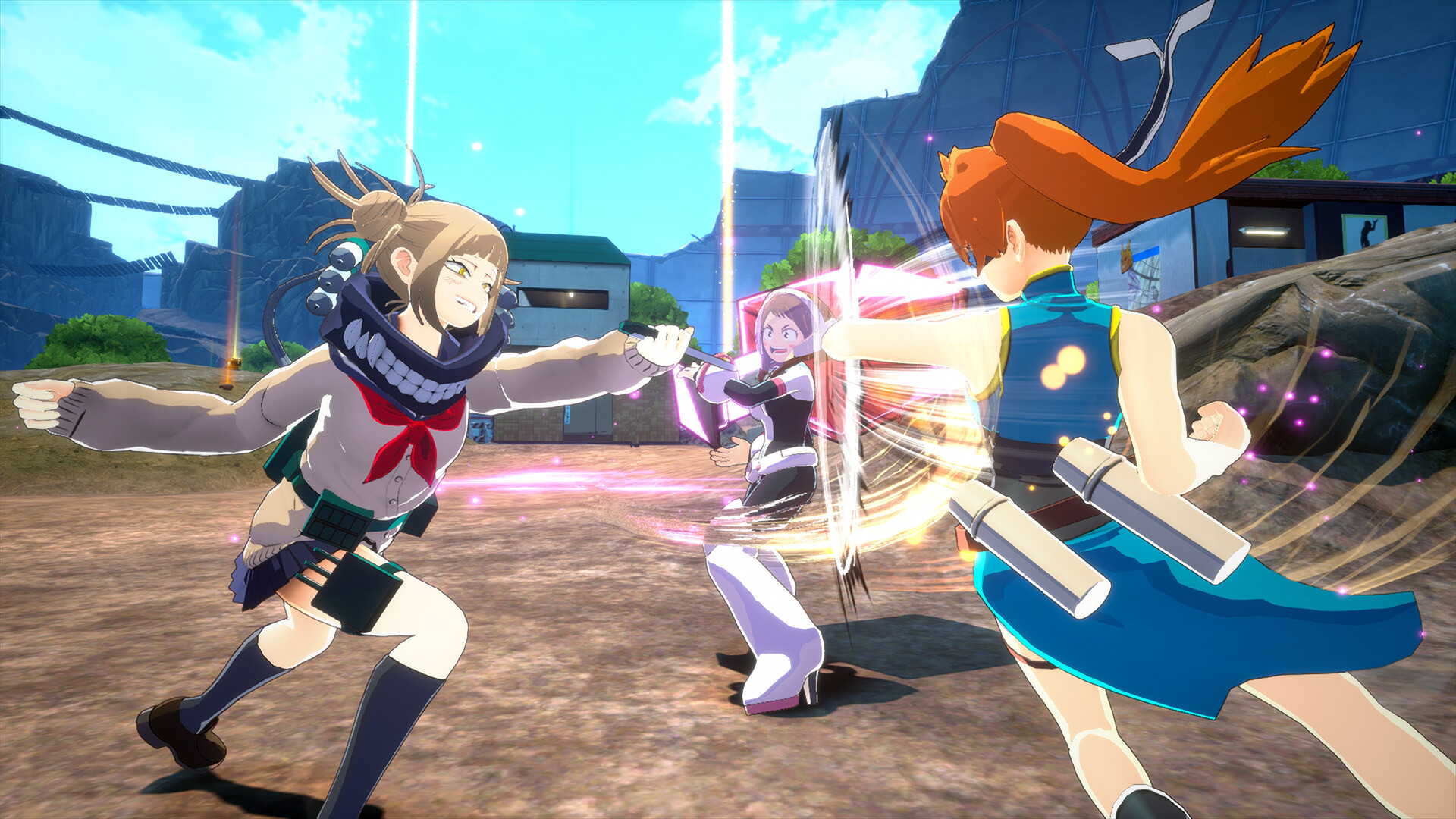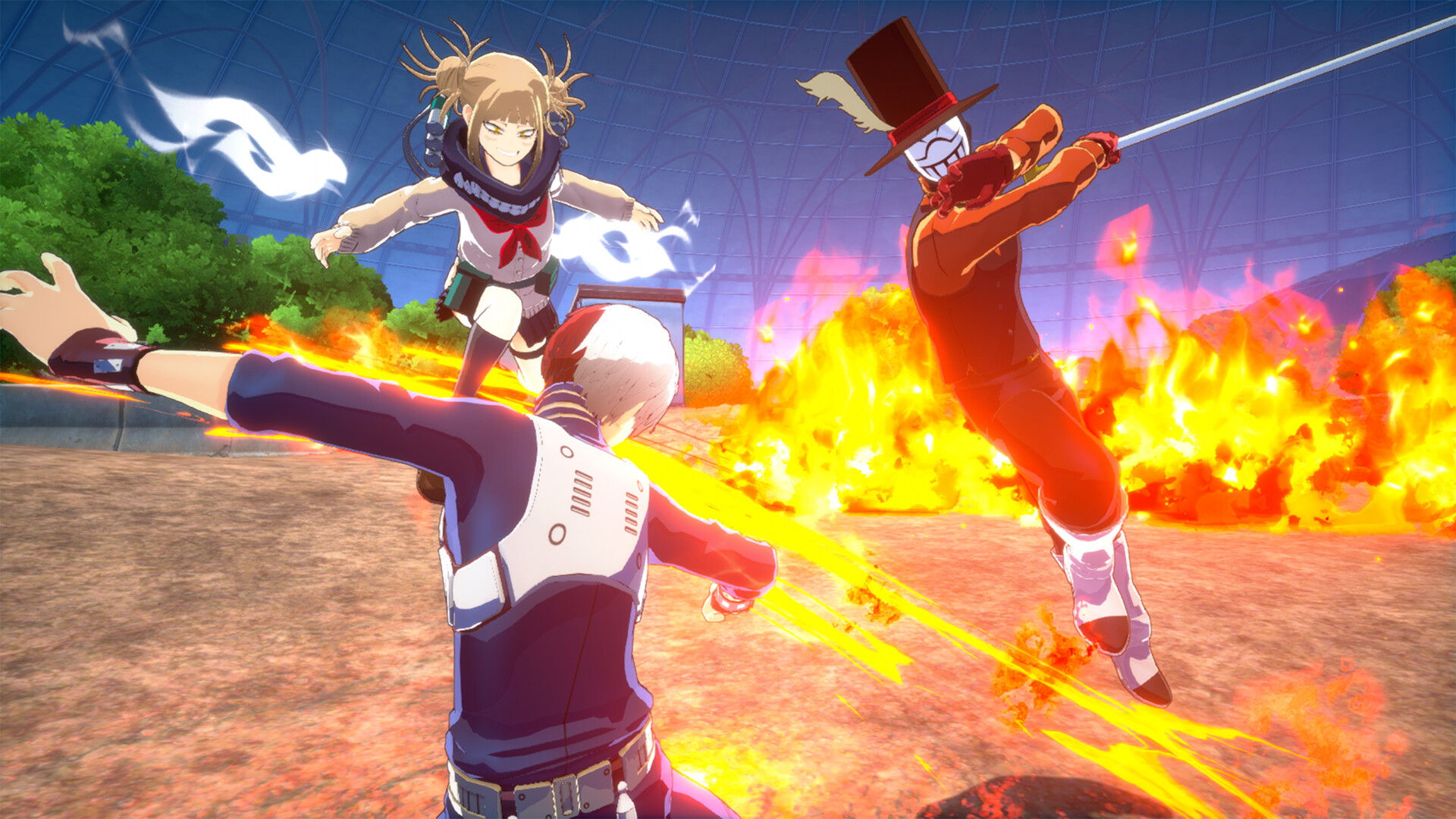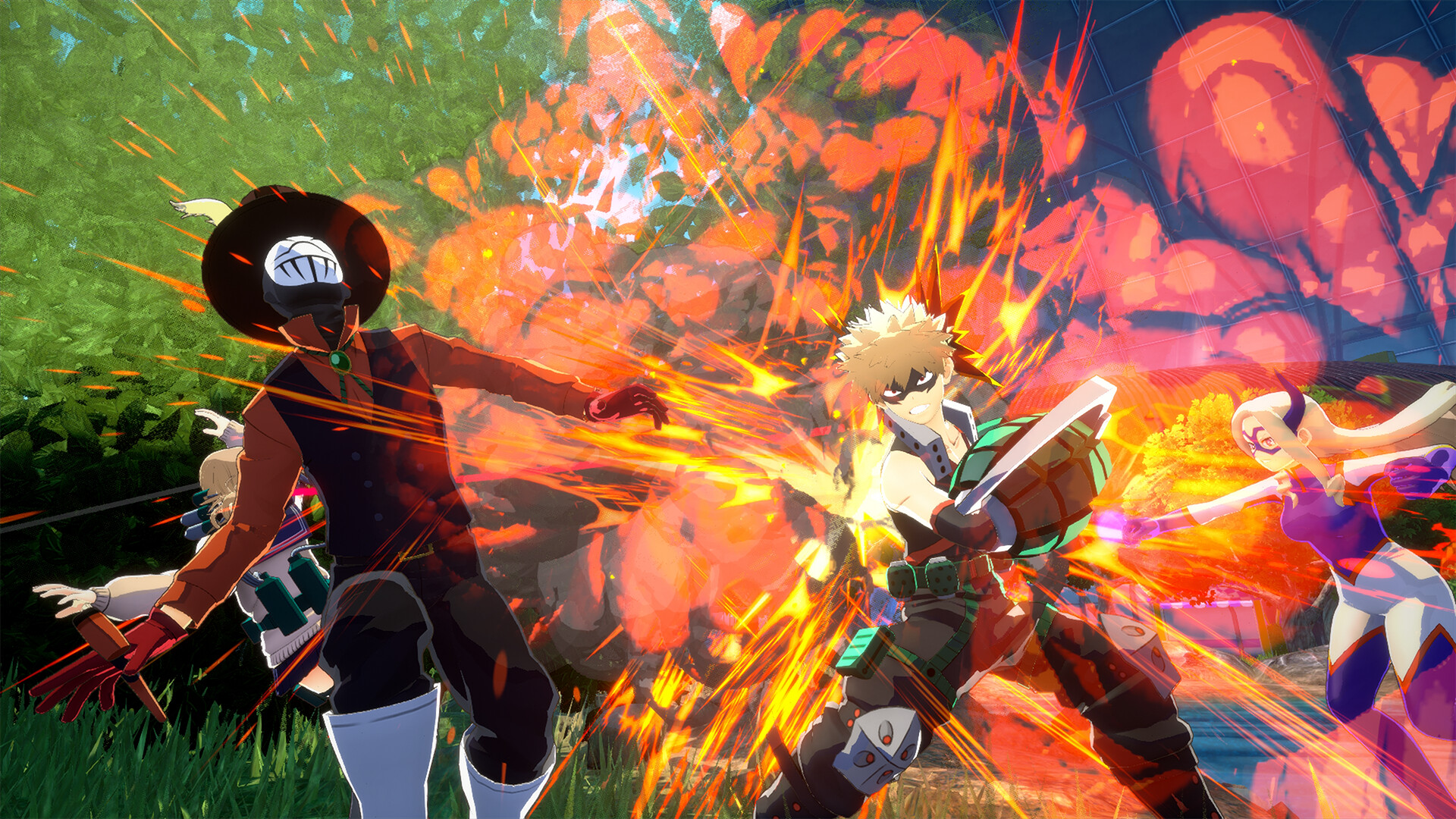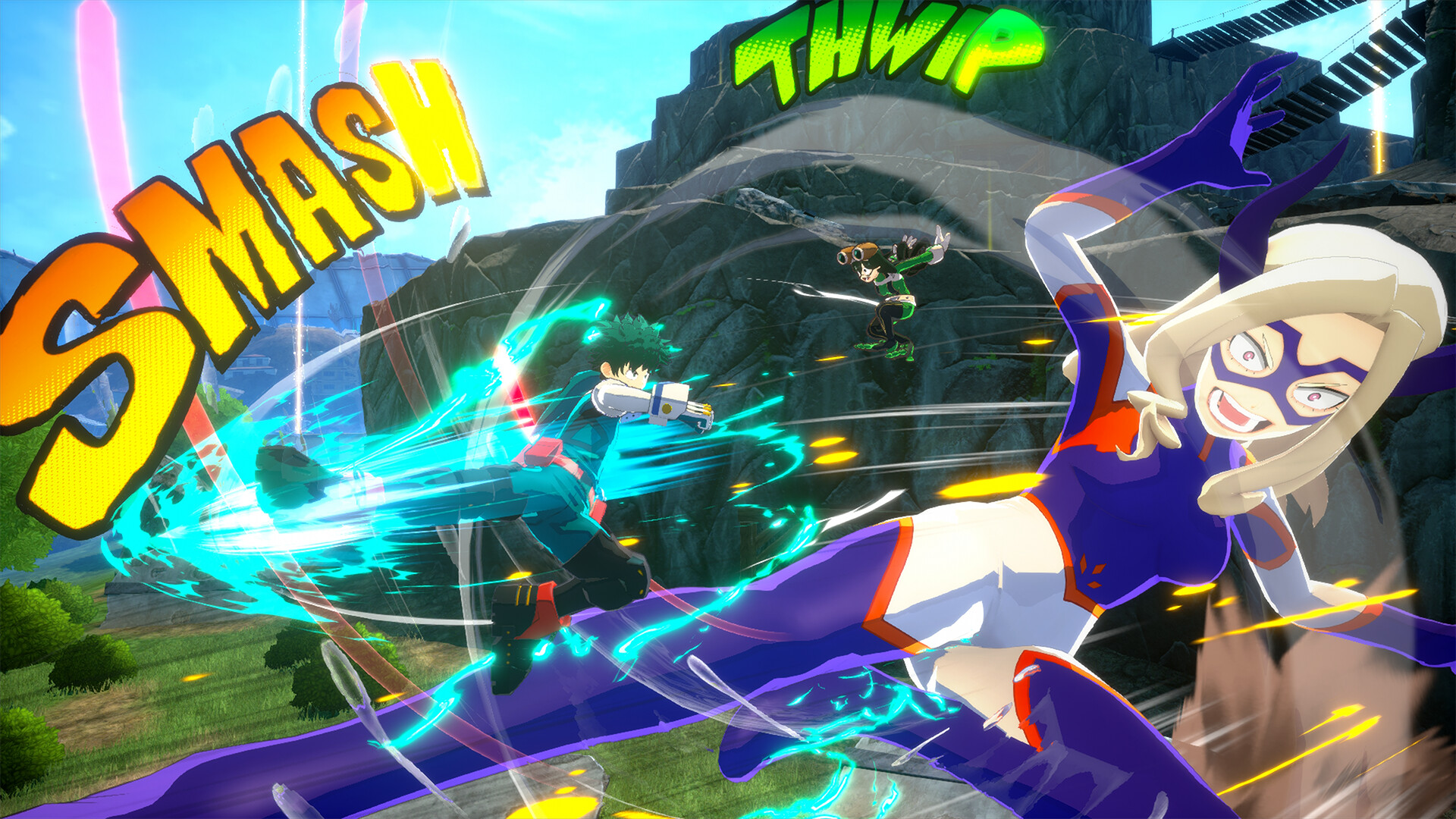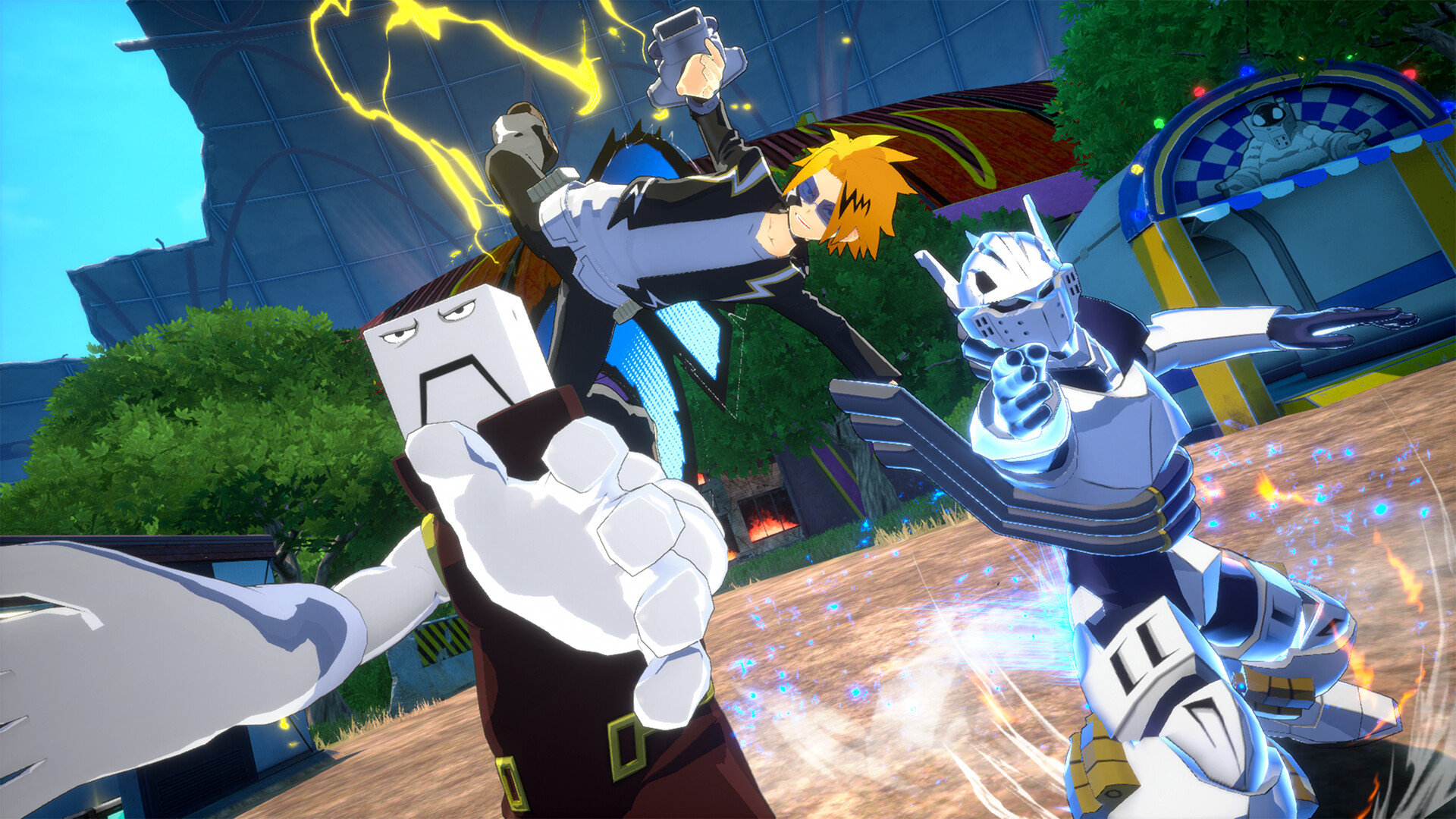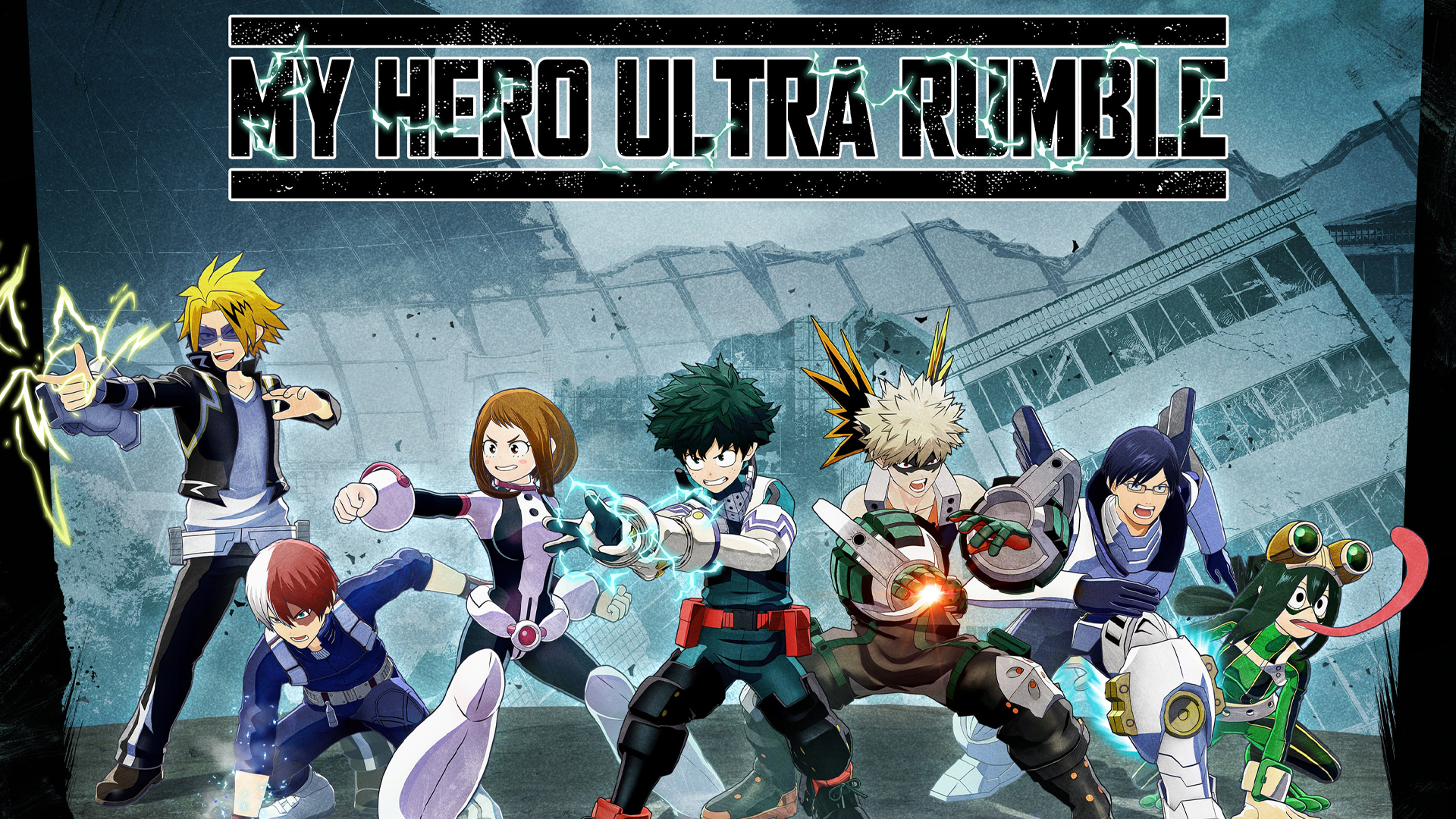
My Hero Ultra Rumble, the free-to-play battle royale based on the My Hero Academia manga and anime, is finally here.
Being familiar with the source material and having enjoyed a few seasons of the show, I decided to try the game out, as I was really curious to see how it could be adapted into a battle royale.
My Hero Ultra Rumble is a third-person shooter where players enter the map in teams of three with the goal of being the last ones standing. Things are par for the course as far as battle royales go, but there are some differences here and there.
My Hero Ultra Rumble
Developer: Byking
Publisher: Bandai Namco Entertainment
Platforms: PlayStation 4, Xbox One, Nintendo Switch, and Microsoft Windows (Reviewed)
Release Date: September 28, 2023
Players: 24
Price: Free-to-play
In the world of My Hero Academia, most of the population is born with superpowers, so instead of collecting weapons, you start matches with a set of skills, all based around your character’s unique powers.
The game features a roster of 18 characters: 14 heroes and 4 villains, all with four skills unique to them. Characters are divided between tanks, specialists, damage dealers, mobility, and supports. Those aren’t the actual names of their archetypes, but it makes more sense to refer to them like that.
Unlike most hero-based games, My Hero Ultra Rumble‘s main unlocks are its characters, and unfortunately, this aspect isn’t approached very well. Players start out with six characters unlocked, and there’s definitely some disparity in the roster.
The game’s best characters are the ones that aren’t unlocked by default, which is not good for balancing, since this is mainly a PvP game. The fact that characters are hidden behind gacha mechanics or a ridiculously grindy battle pass makes things even worse.
Thankfully, players are given three cards per day, which let you choose whatever hero you want, regardless of whether they are unlocked or not. It’s a nice way of letting people test characters, but it also feels really bad to be eliminated early while using one of these cards.
The game’s gacha mechanics are pretty rough, making every character the highest rarity roll, a three-star. Characters have a 0.5% chance of showing up on a 10x roll, sharing their rarity with costumes, which are also three-star unlocks, but have a higher 0.8% chance of dropping.
This makes My Hero Ultra Rumble one of the few hero-based games where the main unlocks aren’t cosmetics, but the actual playable characters. Cosmetics are still a good part of the game’s monetization system, but the fact that it’s so difficult to acquire a new character definitely speaks volumes.
The game features two battle passes: the seasonal one, which has both a free and premium track, and the special one, which only has a free track. The special battle pass is where you’ll unlock characters, and it’s a personal progress milestone, as it doesn’t seem like that pass will ever go away or expire, unlike the seasonal one.
The special pass is slightly less predatory than most battle passes, especially since it’s available for free, and rewards you with the game’s main unlocks, but at the same time it is unreasonably grindy, to the point where it feels like a number was moved by accident and messed up the XP requirements.
Six of the game’s characters are unlocked by progressing through the special pass, and it includes some fan-favorites like Bakugo, Todoroki, Asui, and Toga, with All Might sitting at the very end as a level 30 reward. The rewards available through the special pass are decent, and thankfully, there are rewards for every level.
Buying all levels on the seasonal battle pass goes for roughly 78 dollars, if conversion hasn’t failed me, and it definitely feels like Bandai Namco was expecting to get a full game’s deluxe edition price out of impatient people.
The game’s gacha rolls have really bad rates, and it’s unknown if the pity system will carry through banners, which is worrying for any game with gacha mechanics, especially considering this game’s low rates. The system definitely feels geared towards making players frustrated with the low drop rates and more inclined to spend money.
My Hero Ultra Rumble seems to reuse assets from another game based on the series, My Hero One’s Justice 2. This is already a trend, where Bandai Namco will reuse assets from their mainline games to make spin-offs.
At the very least, this isn’t a Dragon Ball: The Breakers scenario, where the game is not only made with reused assets (in Dragon Ball‘s case, being taken from Xenoverse), but also costs $20.
I personally don’t mind reusing assets as long as the game is free, especially because the player models do look good. What does bother me is the fact that this extra breathing room in development hasn’t been used very well. Byking had plenty of time to focus on other aspects of the game, but they didn’t.
My Hero Ultra Rumble plays really well, but matches are extremely simplistic. You drop in, open boxes in the hopes of finding level-up cards, and eliminate other players. There are barely any mechanics aside from the usual battle royale zone shrinkage, which makes the game feel a bit incomplete.
Don’t get me wrong, matches don’t drag on and are extremely fun to play, as My Hero Ultra Rumble‘s gameplay is definitely its biggest selling point, but things start feeling same-y after a while.
Maybe it’s just an inherent defect of the genre; after all, every battle royale does play out the same, but there definitely could be more. This is only season one of the game, though, so Bandai Namco still has the chance to turn things around. It would take effort to not do anything interesting with such a popular and creative IP.
One thing that I do have to praise is how the game actually manages to make its team-based gameplay relevant. Characters have good synergy with each other, and a good setup can be devastating for your enemies.
A well-coordinated team is very scary to deal with, and honestly, getting good teammates is the biggest deciding factor in this game, as it’s impossible to take on an entire team alone.
If anything, I can definitely say that My Hero Ultra Rumble works really well as a team-based game, and at no point did I feel bummed out about not being able to play solo. This game is a blast to play with friends or randoms through matchmaking.
The fact that Bandai Namco really expects you to pay for the smallest commodities, like having access to the game’s roster, is a bit crazy, and while I do understand that the game needs to pay for itself, Bandai Namco hasn’t put any effort into making the microtransactions appealing, instead choosing to make them obnoxious.
It’s very easy to see that not a lot of money was put into this game, but it still somehow came out decent. The game’s foundation is really solid, and maybe some monetization tweaks and more variety, as well as crossplay, could really make My Hero Ultra Rumble more than just a licensed asset flip.
Despite its current caveats, My Hero Ultra Rumble is one of the more interesting battle royales out there, and I really hope that it improves in the future. Bandai Namco does seem to be listening to feedback, so things aren’t looking very grim.
You can find additional information about Niche Gamer’s review/ethics policy here. My Hero Ultra Rumble is available on PlayStation 4, Nintendo Switch, Xbox One, and Microsoft Windows (through Steam).

